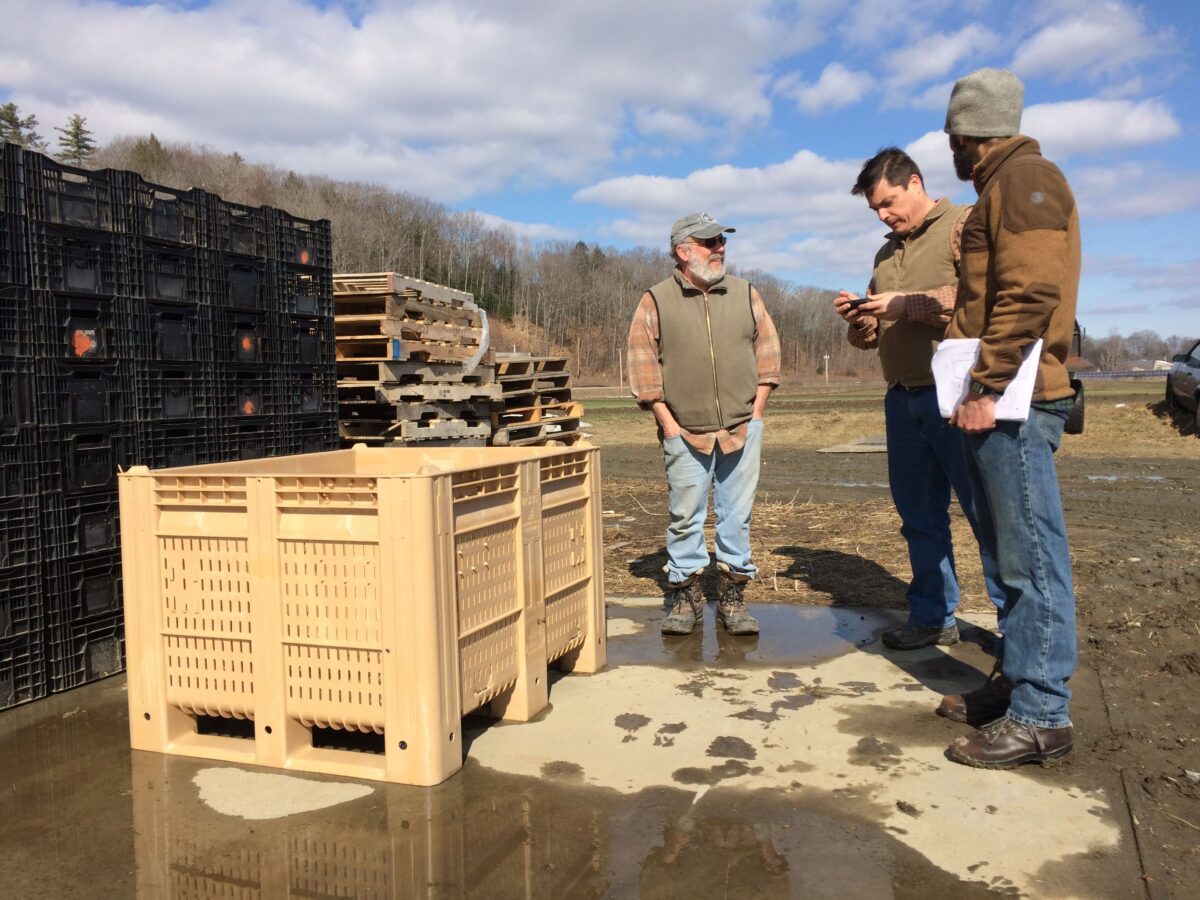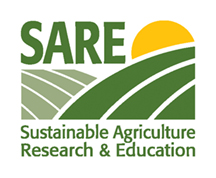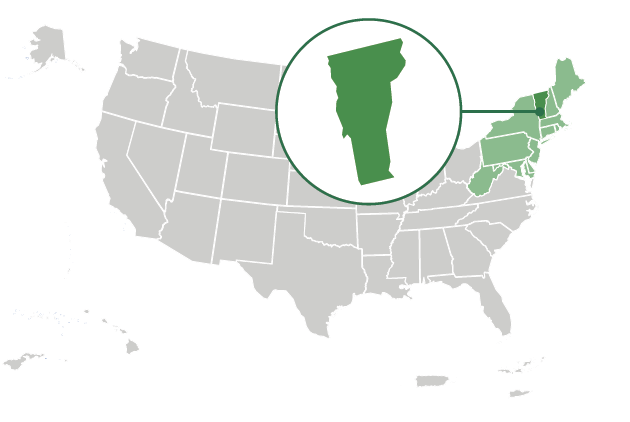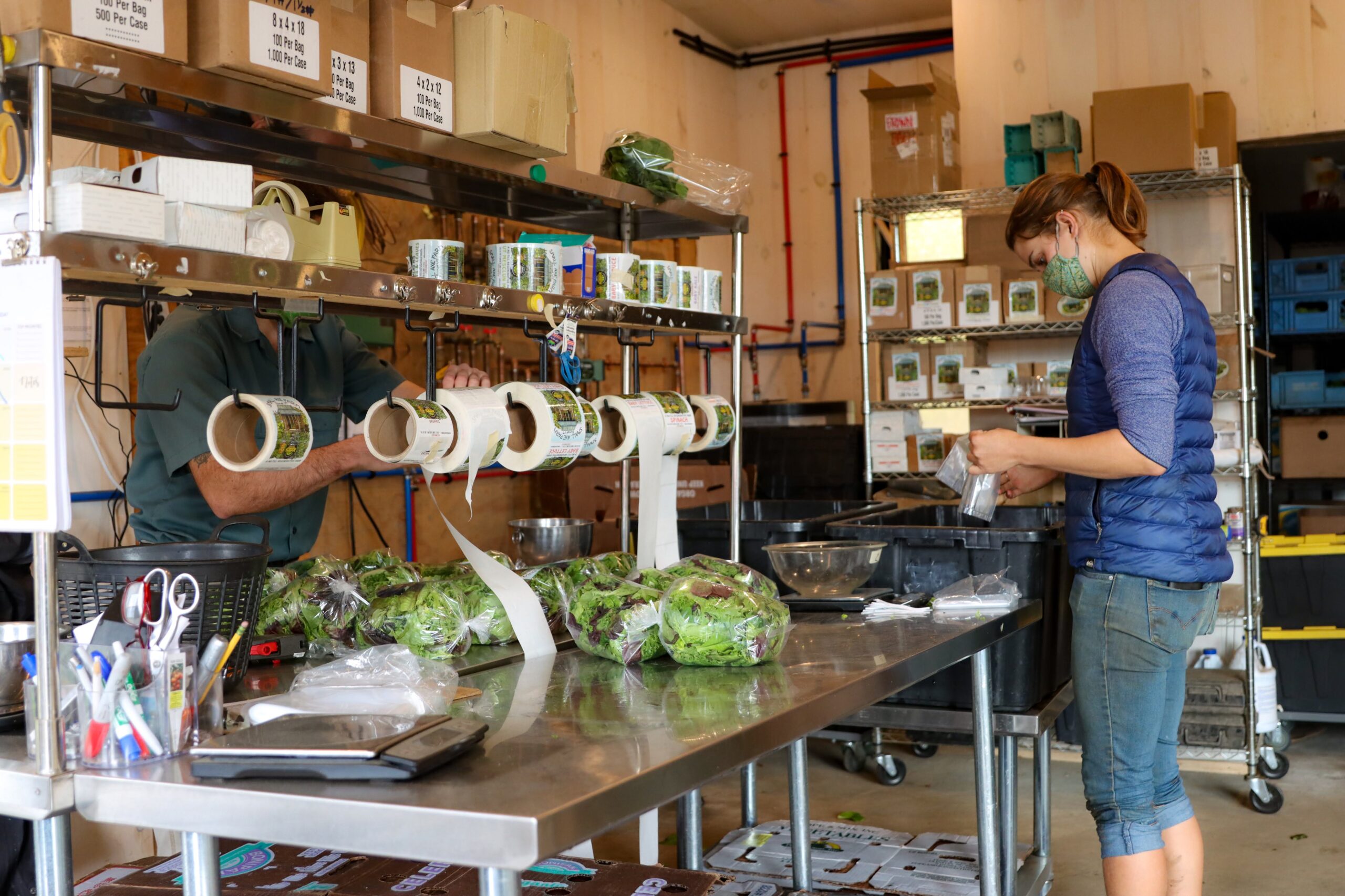
Coupling on-farm technical assistance with case study methods to enhance postharvest infrastructure and build a peer-to-peer training network.
Produce that has been harvested is a living organism, but it is dying. The best we can do is develop systems and practices that maintain and sustain quality and safety as long as possible. All of this work that’s gone into producing the crop months of tending and growing, years of soil health and farmer training, investment in production equipment- everything is invested in that crop. Postharvest is making sure that prior investment actually reaches the customer in a high-quality, valuable way.”
—Christopher Callahan, Research and Education Grantee
Delivering Quality Produce by Leveraging Postharvest Infrastructure
SARE POST-PROJECT EVALUATION IMPACT MODEL
This evaluation impact model is specific to this SARE-funded project.
Sustainability Impacts
The project grantees and stakeholders contributed to the following sustainability impacts:
- Economic sustainability impacts
- Production efficiency impacts
- Social sustainability impacts
Grantee Indicators
(Extension Professor)
Project grantees (defined above) achieved sustainability impacts by engaging with the following indicators through involvement with project activities:
- Increased capacity/motivation
- Increased engagement
- Practice change
- Career growth
Stakeholder Indicators
(Producers, Ag Service Providors/Educators)
Project stakeholders (defined above) achieved sustainability impacts by engaging with the following indicators through involvement with project activities:
- Increased knowledge/skills
- Increased capacity/motivation
- Increased engagement
- Practice change
The Success Story
In the northeast, demand for local produce is increasing. At the same time, food safety expectations and requirements such as the federal Food Safety Modernization Act (FSMA) has become more stringent. To accommodate this shifting landscape and in pursuit of efficiency, small- and medium-sized growers are motivated to improve the postharvest infrastructure of their operations. At the same time, identifying equipment and building renovations aligned with a farm’s unique needs is a complicated endeavor. Without intentional planning, improvements may undermine an operation’s long-term vision and hinder farmer wellbeing. Christoper Callahan and his team at the University of Vermont Extension Agricultural Engineering Program consolidated existing postharvest education resources, delivered training, and engaged farmers in on-farm projects. By positioning producers as co-creators, the project built their capacity to become peer trainers. This in turn increased other producers’ access to practical guidance delivered by peers with hands-on experience.
Case Studies Facilitate Peer Learning
My job has gotten a lot easier, and I think growers are having a higher quality learning experience. Now, when we get inquiries about postharvest projects, the first step is to suggest they look at some of these 13 case studies we’ve developed. Often, they end up connecting with that grower directly to ‘talk shop’ and they’re off and running. It’s not that my goal is to do less work or to burden the sharing grower with more work, but there’s something that comes from that peer learning that I’m never going to be able to provide. By collecting the sharing grower’s experience in web, print, and video format it also makes it easier for someone else to get up to speed and then reach out on specific details of relevance.”
—Christopher Callahan, Research and Education Grantee
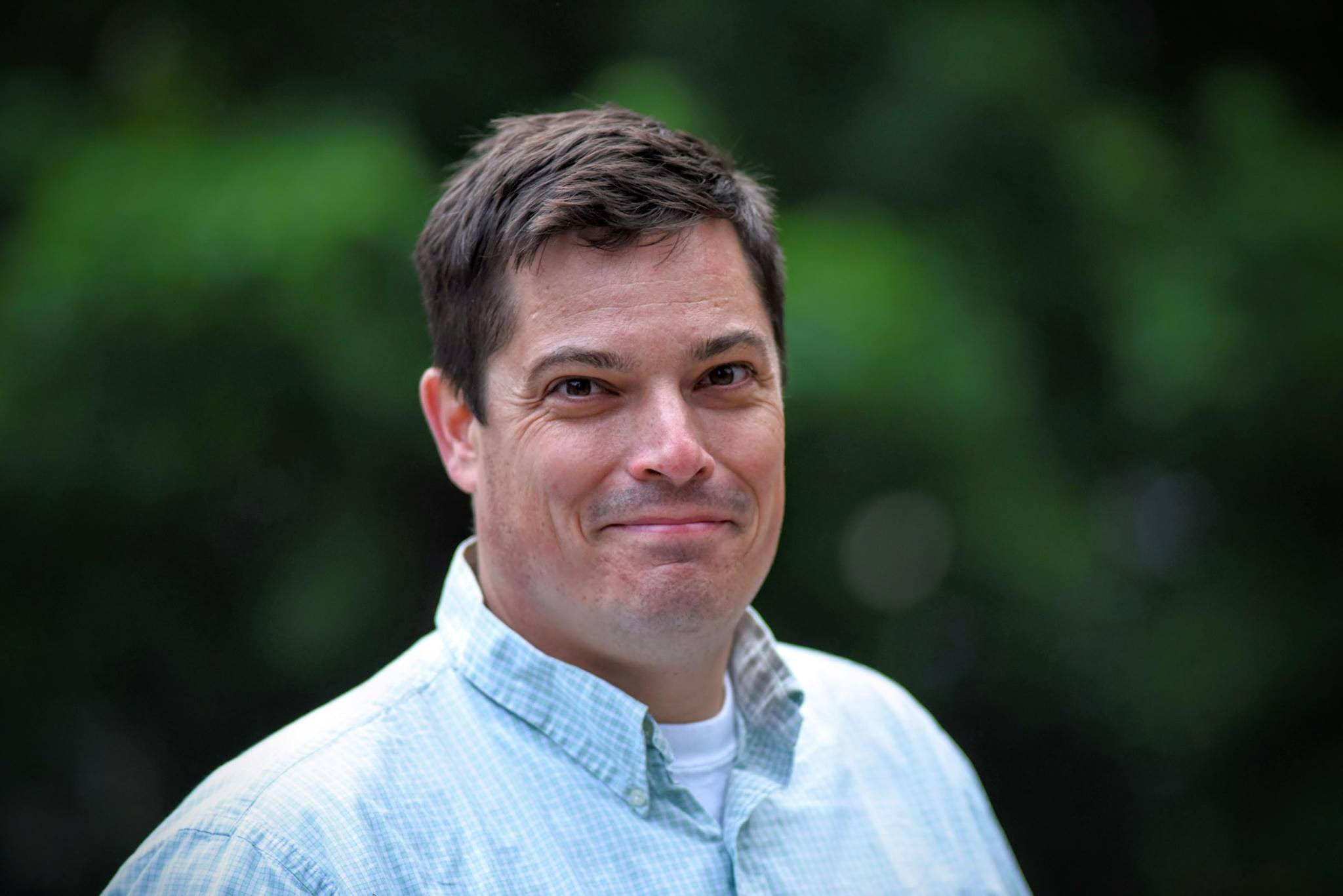
Grantee (Extension Professor) Highlights

Christopher Callahan is one of the few technical experts who focus on small- and medium-scale postharvest setups. He is filling an unmet need by translating the fundamentals of much larger operations, but acknowledges he doesn’t have the capacity to respond to the vast population of producers working at smaller scales across the country. By partnering with farmers to design fit-for-purpose solutions that can be enhanced over time, and documenting the processes and learnings with rich case studies, his team is creating practical resources and cultivating farmers’ capacity to train others navigating similar adaptive challenges. Callahan now includes case study methods in all of his grant applications, including a more recent aquaponics and hydroponics project awarded under USDA NIFA’s Food Safety Outreach Program. This enables him to weave funding sources together, leverage farmer engagements, and translate learnings from one project or farm to others.
Other Stakeholder (Producers, Agricultural Service Providers/Educators) Highlights
The project delivered postharvest educational products and technical assistance support to hundreds of thousands of growers online and on-farm. Post-workshops evaluation surveys revealed statistically significant increases in knowledge of and confidence to implement improved practices. Comments on social media also pointed to immediate impacts on farmers and service providers. Informal evaluation, interviews, and documentation demonstrated behavior change and adoption of practice among participating farms. The case studies developed by the project offer rich descriptions of infrastructure improvements. For example, one case study showcased how Patrick S. and Melisa O. of Ananda Gardens in Middlesex, VT affordably renovated a 1950s era dairy barn to accommodate a wash- pack station, coolers and packing storage. These additions increased capacity and sales while with the added benefit of reducing labor. Some farmer collaborators have gone on to educate peers about their projects through public speaking engagements aided by the case study materials, photos, and videos the project helped to collect.
.
Building a Network of Peer-to-Peer Educators
All the growers we've worked with were not only partners, but true collaborators in knowledge creation and sharing. I get invited to speak at conferences and grower meetings.
—Christopher Callahan, Research and Education Grantee
What’s been nice is saying, 'I could come and speak, but you should actually ask to hear this grower’s story from them directly.’ Most people don’t get into farming to speak in public, so sometimes there’s hesitation, but I’ve found that by helping them document their project as a case study in a variety of formats enables them to tell their own story more easily and become educators.”
Sustainability Impacts
Prior to this project, Callahan participated in a SARE-funded social sustainability professional development program that significantly influenced his training and technical assistance approach. Callahan begins each postharvest collaboration with a farmer by analyzing the organizational culture of their operation in a way that emphasizes farmer wellbeing. He couples this with systems design principles, supporting growers to work efficiently and ergonomically in physical spaces built to accommodate basic human needs. Examples include increasing natural light, installing radiant heat to keep feet warm during produce washing and packing, and directing water flows away from workspaces to minimize exposure to dampness. By applying these methods, farm businesses are increasing production, ensuring safety, and achieving greater financial sustainability. During the project, Callahan documented $680,000 in cost savings through improved labor efficiency and reduced waste.
Barriers
This project took place during the COVID-19 pandemic, forcing the team to pivot to using virtual platforms to engage with producers. This pivot proved to be a “silver lining” in Callahan’s view because it prompted the team to develop a virtual technical assistance approach using Zoom and Google maps to walk farmers through a systems analysis of their land and workflows. Callahan’s next endeavor will focus on environmentally friendly postharvest solutions as he believes significant progress can be made on reducing operational use of materials that ultimately become waste such as plastics.
Another issue I'm chewing on is the degree to which plastics are the solution to farming challenges. A lot of the answers to postharvest handling, storage, and safety challenges are to throw plastic at them. But at the same time, plastics are a real problem. I think we need to do better, so that’s opened up a whole new realm for me.”
—Christopher Callahan, Research and Education Grantee
Plastics are a Sustainability Problem in Postharvest Systems
Contributors
Callahan’s key collaborator at UVM’s Agricultural Engineering Extension Program is Andrew Chamberlin, an Engineering Technician who is highly skilled in multimedia, visual education, and product development. Chamberlin was instrumental in sharing the project’s story through a series of YouTube videos that walk viewers through key project planning tasks to achieve postharvest efficiency, profitability, and food safety. He also led the development of highly video and photographic case studies that bring the farm to the viewer in the comfort of their home or farm office. Callahan’s generalist, systems-oriented approach to delivering extension services also contributes to his program’s success. He weaves the varied pieces of a postharvest system through his practice, calling attention to how these components are related, collectively comprise the larger whole, and evolve over time within changing contexts.
A Systems Orientation Aligns With Producer-Driven Extension Services
My specialty is generalization. If there’s a specialization, it’s systems, and in this case, food systems. That’s my foundation. I intentionally try to not over-specialize in any one topic but, rather, remain responsive and continue to be a learner myself. It’s an approach that works well for research and education, and in particular, extension.”
—Christopher Callahan, Research and Education Grantee
